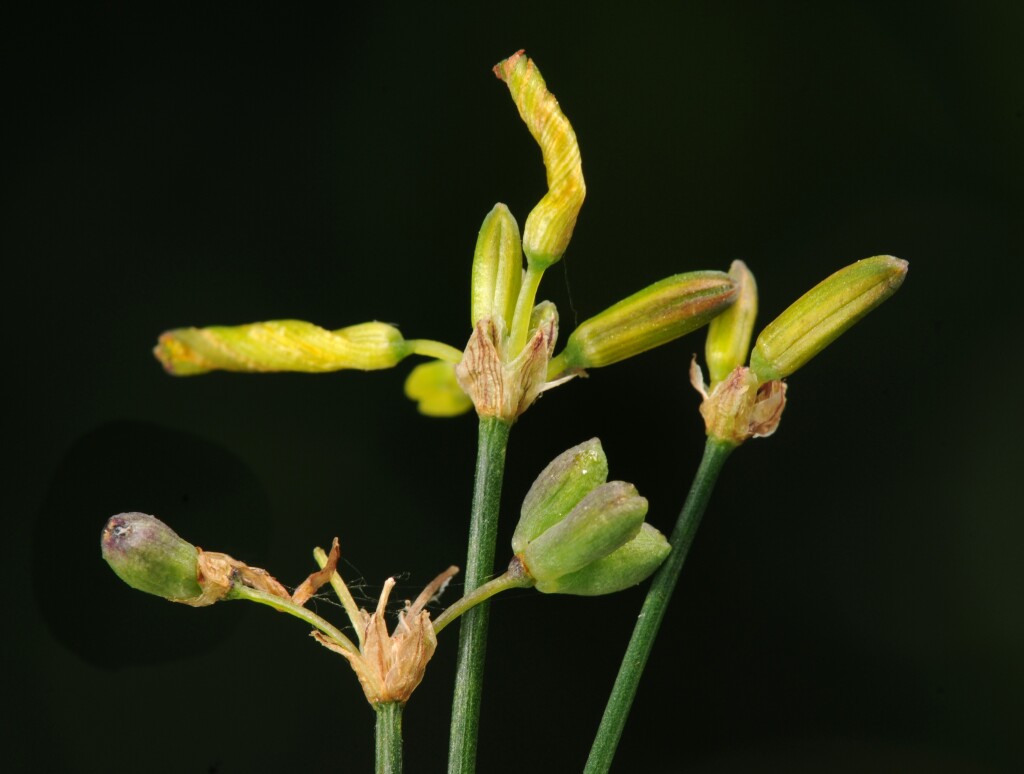Tricoryne elatior
R.Br. Yellow Rush LilySprawling to semi-erect plants to c. 70 cm high; branches mostly dichotomous; stems terete or slightly grooved, sometimes scabrous. Leaves rather few, linear, flat, 5–10 cm long, c. 2–4 mm wide, entirely basal or reduced and subtending upper branches, rarely absent. Umbels 2–10-flowered; perianth segments 6–14 mm long, yellow, longer than stamens, sepals slightly longer and narrower than petals. Mature mericarps 4–6 mm long, ovoid. Seed ovoid, c. 3.5 mm long.
LoM, MuM, Wim, GleP, VVP, VRiv, MuF, GipP, OtP, WaP, Gold, CVU, GGr, DunT, NIS, EGL, EGU, WPro, HSF, HNF, Strz, MonT, VAlp. All states. Occurs in grassland, open-forests and heaths across much of lowland Victoria but commoner in the south. An incomplete specimen from Wyperfeld National Park, tentatively referred to this species, is the only collection from the north-west of the State. It may be an aberrant, tenuous form of Tricoryne tenella, the typical Tricoryne of that region.
Conran, J.G.; Walsh, N.G. (1994). Tricoryne. In: Walsh, N.G.; Entwisle, T.J., Flora of Victoria Vol. 2, Ferns and Allied Plants, Conifers and Monocotyledons, pp. 653–654. Inkata Press, Melbourne.
 Spinning
Spinning



